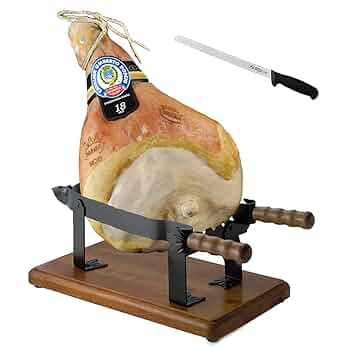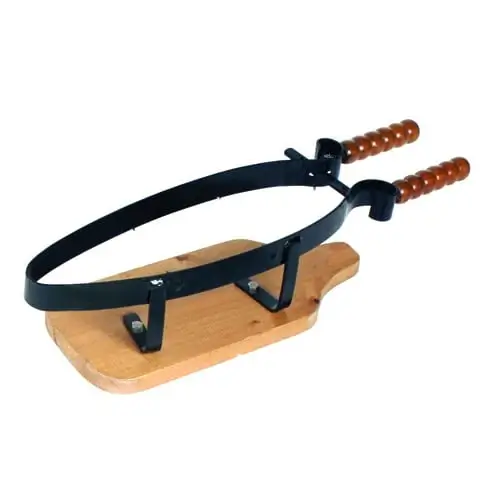A Sunday in Nonna’s Kitchen
Picture a sunny Sunday afternoon inside a warm, lively Italian kitchen. The scent of freshly baked bread filled the air, mingling with the savory aroma of aged cured meats. At the heart of it all was Nonna, proudly holding her wooden ham stand, supporting a full leg of prosciutto. With practiced hands, she carved paper-thin slices that fluttered onto a serving plate. These moments were more than meals—they were living traditions passed down, reminding us of the days when cooking was rooted in heritage, dedication, and love.
More Than Just a Kitchen Tool
Often dismissed as a mere utility item, the prosciutto holder holds deep cultural meaning. Strong, reliable, and elegantly simple, it has played a crucial role in Mediterranean kitchens and markets for generations. But what led this modest tool to become such an iconic symbol in culinary heritage?
Ancient Roots in Culinary Craftsmanship
The prosciutto rack traces its roots back to ancient meat-curing practices in the Mediterranean. In Roman times, preserving meat with salt was a vital technique, especially in regions like Parma where prosciutto became a delicacy. The ham stand evolved as a necessary companion—holding the leg steady for precise, thin slicing that preserved flavor and texture.
While the exact origins are unclear, historical records suggest the stand developed during medieval Europe. As meat preservation gained popularity, the need to secure and serve cured meat grew. By the 19th century, wooden and metal versions of this stand became a staple in both homes and butcher shops across the continent.

A Symbol of Shared Celebrations
Mediterranean life celebrates food, family, and togetherness. The prosciutto stand plays a starring role in that tradition. During weddings and holiday feasts in countries like Spain and Italy, the ham isn’t just food—it’s a centerpiece. Whether enjoyed at home or from a balcony overlooking a festive plaza, it brings people together and sparks joy.
As Italian and Spanish cuisine gained global recognition in the 20th century, prosciutto holders became culinary ambassadors. Restaurants and gourmet delis embraced them to honor authentic preparation. For immigrant families, it became a nostalgic bridge to their past—connecting generations over shared meals.
Tradition Meets Modern Design
Today’s prosciutto stands combine tradition with modern aesthetics. From rustic wooden styles to sleek plexiglass versions, they serve both function and form. These tools have transformed into conversation pieces that elevate the dining experience, anchoring meals in a sense of ritual and connection.
For those who grew up with one in the kitchen, the ham holder is more than a gadget—it’s a memory trigger. It calls to mind joyful family dinners, laughter, and stories shared across the table. For newcomers to Mediterranean cuisine, it serves as a warm welcome into a culture rich with flavor, history, and hospitality.
Honoring the Legacy at Your Table
Prosciutto’s delicate balance of savory richness and subtle saltiness is only part of the story. Look closely at the weathered stand supporting that beautiful meat. Behind its simple structure lies centuries of culinary tradition and craftsmanship. In homes around the world, these holders continue to remind us of where we come from—and how we share life through food.
So next time you gather around your table, consider making the prosciutto stand part of your own tradition. Let it bring people together. Pass the plates, pour the wine, and enjoy the conversation. Because in the end, it’s not just about the food—it’s about what that food represents: connection, culture, and the joy of gathering.
